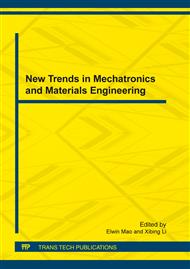p.231
p.235
p.240
p.245
p.250
p.255
p.260
p.266
p.271
Research on Magnetic Memory Characteristics of 2.25Cr1Mo Steel under Bend Deformation State
Abstract:
This paper has studied the feasibility of detection of bending deformation on hydrogenation reactor based on magnetic memory test. The bend specimens were made of 2.25Cr1Mo steel, which is always used in hydrogenation reactors. Specimens were divided into defect-free specimen, cracks specimen and welding specimen. And then three-point bending tests were done on the material test machine. The magnetic signals were detected by magnetic memory sensors to research different variation of magnetic signals on different bend stage. The ferromagnetic theory was used to explain the variation. It is feasible to preliminarily evaluate the bend state by the magnetic memory signal.
Info:
Periodical:
Pages:
250-254
Citation:
Online since:
January 2012
Authors:
Price:
Сopyright:
© 2012 Trans Tech Publications Ltd. All Rights Reserved
Share:
Citation:


